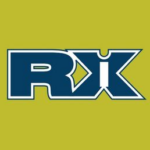SynMed® and USP <800>
There has been much concern as to the impact of USP General Chapter <800> (USP <800>) on the use of pharmacy automation, such as SynMed®. Specifically, Section 12 states that “Tablet and capsule forms of antineoplastic hazardous drugs (HD) must not be placed in automated counting or packaging machines, which subject them to stress and may create powdered contaminants.”
The need to help ensure a quality environment and to protect healthcare personnel from hazardous drugs has been a topic of concern for decades. While NIOSH defines criteria and identifies hazardous drugs, USP developed standards for handling these HD to minimize the risk to public health. The goals of these standards are to help increase awareness, provide uniform guidance to reduce the risk of managing HD, and help reduce the risk posed to patients and the healthcare workforce.
USP<800> officially goes into effect December 1, 2019, and while the standard articulated in <800> is only required in the context of compounding, it is a science-based standard that can be utilized in healthcare settings beyond compounding at the discretion of regulatory authorities and other oversight organizations with jurisdiction over these settings. Accordingly, state agencies (e.g. State Boards of Pharmacy), other regulators (e.g. Occupational Safety and Health Administration), and oversight organizations (e.g. The Joint Commission) may make their own determinations regarding the applicability and enforceability of <800> for entities within their jurisdiction.
For all NIOSH classified HDs, each Pharmacy is expected to perform a risk assessment on each medication, to categorize them, and to establish their handling strategy for hazardous drugs.

For assistance with the risk assessment process, please see the sample Assessment of Risk Template in Appendix I, as provided by the National Community Pharmacists Association (NCPA).
NIOSH has categorized hazardous drugs into three (3) categories.
It is clear, and consistent with current practice, that all antineoplastic HDs (Group 1) be kept external to any automation.
With respect to the SynMed® system, all Group 1 medications should be positioned in the patient-specific blister card by hand. This can be done securely and efficiently using the SynMed® Assist module.
SynMed® technology is unique among automated compliance packaging machines. We provide below all the relevant facts to allow you to complete a thorough risk assessment with respect to the nonantineoplastic (Group 2 & Group 3) HDs within the SynMed® system.

SynMed® uses a patented Pick & Place technology, i.e. gentle suction removes the oral solid from the medication container and allows it to be gently dropped into the blister pack cavity.
If the Pharmacist has any concern as to the safety of including a specific molecule inside the automated SynMed® system, said medication should be positioned in the patient-specific blister card by hand. This can be done securely with the help of the SynMed® Assist guidance system. Manually positioning the medication in the blisters of a specific patient ensures that there is no contact with other patients’ medications throughout the preparation process.
SynMed® is the only automation system with which all HD classified medications can be securely positioned in the same compliance pack.
Key features of SynMed® technology for consideration:
-SynMed® uses gentle suction, apt for handling fragile medications and not breaking tablets
-tablets
– SynMed® containers do not have a motor and crown, nothing to create stress on the medications
-The FDA-grade stainless steel pipettes are the only touch point in the system
-Not being a gravity-fed system, there is no common chute down which all the medications trave
-The vacuum system contains a series of filters for any pill dust, including a HEPA filter
-All external medications are securely positioned directly in the patient-specific blisters, with no cross-contamination, using SynMed® Assist
Additionally, Synergy Medical has ensured software enhancements that will alert the operator to use special handling when positioning HDs by hand.

Similarly, an alert will advise the operator to use special handling during the container replenishment of a nonantineoplastic HD (Group 2 & Group 3).
We trust that the above information is useful as you navigate any required handling changes for NIOSH classified hazardous drugs.
As always, should you require any further information or clarification, our team is available to assist you.
Dave Joyal, Pharm.D., MBA
Director of Professional Affairs
Synergy Medical
dave.joyal@synmedrx.com
450.501.2859


Assessment of Risk written by: Date:
Reviewed by Pharmacy Manager: Date:
*Disclaimer: This assessment of risk is a baseline template and may need to be individualized
for different drug products per USP <800> standards as required by your State. The
information contained in this template is not intended to constitute legal advice, nor serve as a
substitute for the engagement of qualified professionals.
Appendix II – References
-General Chapter 800
-NIOSH List of Antineoplastic and Other Hazardous Drugs in Healthcare Settings, 2016
https://www.cdc.gov/niosh/docs/2016-161/default.html
-USP800 Risk Assessment Templates
https://www.ncpanet.org/innovation-center/diversified-revenue-opportunities/compounding
SynMed® technical support team: 1 866 764 7966, ext. 1 / support@synmedrx.com




